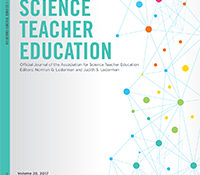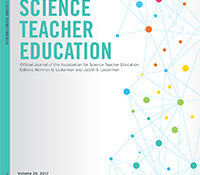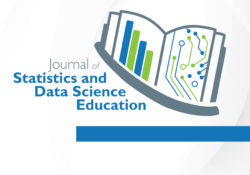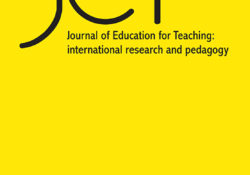tandfonline.com har udgivet en rapport under søgningen “Teacher Education Mathematics”: ABSTRACT ABSTRACT Effective professional development programs (PDPs) rely on well-defined goals. However, recent studies on PDPs have not explored the goals from a multi-stakeholder perspective. This study identifies the most important learning goals of PDPs at science research institutions as perceived by four groups of stakeholders, namely teachers, education researchers, government representatives, and research scientists. Altogether, over 100 stakeholders from 42 countries involved in PDPs at science research institutions in Europe and North America participated in a three-round Delphi study. In the first round, the stakeholders provided their opinions on what they thought the learning goals of PDPs should be through an open-ended questionnaire. In the second and third rounds, the stakeholders assessed the importance of the learning goals that… Continue Reading →
Like this:
Like Loading...
eric.ed.gov har udgivet: The emergence of technology has led to numerous changes in mathematical and statistical teaching and learning which has improved the quality of instruction and teacher/student interactions. The teaching of statistics, for example, has shifted from mathematical calculations to higher level cognitive abilities such as reasoning, interpretation, and evaluation (Ben-Zvi, 2000). Visualization is one such technological tool and can be defined as the graphical display of information. The benefit of this approach is in providing the viewer with a visual means of processing information (Segenchuk, 1997). Since the 1980’s, graphical aids have been viewed as an innovative strategy in education, especially for math or science related subjects. The purpose of this study is to investigate the use of Flash applets on Pocket PCs in statistics education, specifically in… Continue Reading →
Like this:
Like Loading...

tandfonline.com har udgivet en rapport under søgningen “Teacher Education Mathematics”: ABSTRACT ABSTRACT Science teachers should be able to notice student preconceptions in order to adapt instructions to their students’ needs and support the learning process. Noticing as a core practice of teaching should thus be implemented early in science teacher education. A crucial prerequisite for noticing is knowledge about students’ preconceptions, which is an important element of science teachers’ pedagogical content knowledge. To enhance pre-service teachers’ pedagogical content knowledge, flipped classroom approaches seem especially promising as they combine a theoretical introduction to important didactic concepts with a direct application of these concepts in profession-oriented learning tasks. Furthermore, flipped classrooms seem to satisfy the three basic personal needs of experience in competence, social relatedness, and autonomy according to the self-determination theory… Continue Reading →
Like this:
Like Loading...
eric.ed.gov har udgivet: The road to the U.S. West, known as the Oregon Trail, had its first real traffic in 1843 when a group of about 1000 people left Independence, Missouri and traveled west. This teacher’s guide contains short descriptions of the main landmarks and stopping points that were significant along the northwest portion of the Oregon Trail. The guide is primarily devoted to the geographical areas and peoples found around and about these important locations. It is divided into the following sections: (1) “Historical Highlights”; (2) “Indians/The First People in Oregon”; (3) “The Missionaries”; (4) “The Pioneers”; (5) “Social Studies Activities”; (6) “Map Activities”; (7) “Language Arts”; (8) “Science Activities”; (9) “Math Activities”; (10) “Art Activity Suggestions”; (11) “Physical Education Activities”; and (12) “Appendix.” A Teacher’s Guide Evaluation Form… Continue Reading →
Like this:
Like Loading...
tandfonline.com har udgivet en rapport under søgningen “Teacher Education Mathematics”: Abstract Formulae display:?Mathematical formulae have been encoded as MathML and are displayed in this HTML version using MathJax in order to improve their display. Uncheck the box to turn MathJax off. This feature requires Javascript. Click on a formula to zoom. Abstract In the classroom, we traditionally visualize inferential concepts using static graphics or interactive apps. For example, there is a long history of using apps to visualize sampling distributions. The lineup protocol for visual inference is a recent development in statistical graphics that has created an opportunity to build student understanding. Lineups are created by embedding plots of observed data into a field of null (noise) plots. This arrangement facilitates comparison and helps build student intuition about the difference… Continue Reading →
Like this:
Like Loading...
eric.ed.gov har udgivet: In 2007, the Home School Legal Defense Association commissioned Dr. Brian D. Ray of the National Home Education Research Institute to conduct a nationwide study of homeschooling in America. The study’s purpose was to develop a current picture of homeschool students and their families–capturing their demographics and educational background–and analyze the impact of certain variables on homeschoolers’ academic achievement. Dr. Ray collected data for the cross-sectional, descriptive study in spring 2008. The 11,739 participants came from all 50 states, Guam, and Puerto Rico. In the study, homeschoolers scored 34-39 percentile points higher than the norm on standardized achievement tests. The homeschool national average ranged from the 84th percentile for Language, Math, and Social Studies to the 89th percentile for Reading. The study also found that whether or… Continue Reading →
Like this:
Like Loading...
tandfonline.com har udgivet en rapport under søgningen “Teacher Education Mathematics”: Link til kilde
Like this:
Like Loading...
eric.ed.gov har udgivet: Six years after the passage of No Child Left Behind and midway to the nation’s goal of having students on grade level or better in reading and math by 2014, more data than ever before has been collected about the academic performance of American students and schools. Information in this brochure charts student demographics, achievement-to-date and trends for Washington as a state and as compared to national statistics. Information on graduation rates, tutoring/choice programs and flexibility options is also included. Link til kilde
Like this:
Like Loading...
tandfonline.com har udgivet en rapport under søgningen “Teacher Education Mathematics”: Abstract The formal recognition of Travellers as a distinct ethnic group by the Irish State in 2017 was arguably a significant step towards redressing the pernicious and endemic institutional racism and marginalisation that Travellers have historically experienced in Ireland. It was announced by the Irish Government in October 2018 that a review of the place of Travellers in existing school curricula would be undertaken, with a view to including Traveller history and culture at primary and post-primary levels. While there are benefits associated with curricular recognition, including its capacity to potentially disrupt the reiterative reproduction of institutional racism at a formal curricular level, a significant body of literature highlights the shortcomings associated with additive curricular approaches. These include tokenism and… Continue Reading →
Like this:
Like Loading...
eric.ed.gov har udgivet: These hearings focused on topics and issues related to the status, quality, and improvement of K-12 science and mathematics in the Pittsburgh area. Science and mathematics teachers, school administrators, school board members, industry leaders, and college officials provided a firsthand description of the nature and direction of science and mathematics curricula as well as their perceptions of what improvements could be made in these areas. These individuals are Delores Augustine, Don McBride, William Merryman, Wayne Mikach, Albert Caretto, Jane Konrad, John DeBlasio, George Murphy, Allen Blacka, Paul LeMahieu, Shirley Joyner, and Hugh Lang. David Bergholz, James Colker, Milton Gottleib, Dan Swickline, Julius Brown, and John Sabol provided input from the perspectives of local industry and the Allegheny County Community college on what technical skills are presently needed… Continue Reading →
Like this:
Like Loading...




